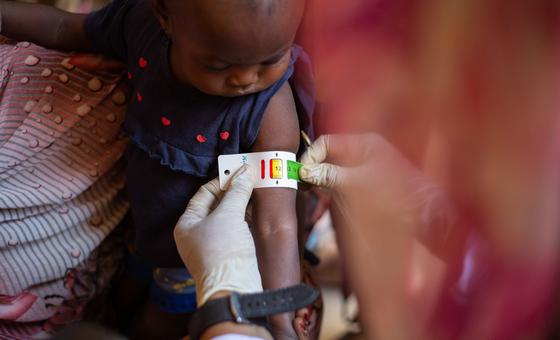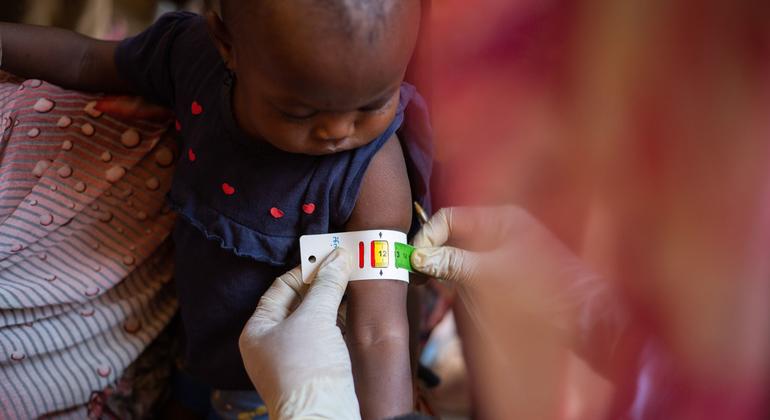
With the civil war between rival militaries now in its 200th day, children “continue to pay the highest price for a crisis not of their making – increasingly with their own lives”, said the agency in a statement.
There are more children now displaced there than anywhere in the world, with three million fleeing the fighting between Government and rival militia forces, mostly within Sudan. Hundreds of thousands are sheltering in make-shift camps in neighbouring countries.
“Some 14 million children in Sudan are in urgent need of life-saving humanitarian assistance”, the agency said. “Many of them are living in a state of perpetual fear – fear of being killed, injured, recruited or used by armed actors.”
Reports of conflict-related sexual violence, including rape, are rampant, with fighting only intensifying in recent weeks in places like Khartoum, Darfur, and Kordofans.
So far, UNICEF has received allegations of over 3,100 severe violations, including the killing and maiming of children.
Future in the balance
“Meanwhile, none of Sudan’s children have been able to return to school, with the future of an entire generation now hanging in the balance. A staggering 19 million children in Sudan are unable to return to classrooms.
UNICEF and partners are providing life-saving assistance to millions of children inside Sudan and in neighboring countries, including water, health, nutrition, safe spaces and learning. But needs are outpacing resources.
“We need safe and unhindered humanitarian access to deliver life-saving supplies and services to reach every child in need.”
South Sudan malnutrition alert: WFP
In neighbouring South Sudan, children in flood-affected areas are at risk of extreme malnutrition in the first half of 2024, with food running low and water-borne diseases spreading fast amid crowded living conditions.
That’s the message from the UN World Food Programme (WFP), which said on Monday that 1.6 million children under five are expected to suffer from malnutrition in 2024.
Rubkona, a county where floodwaters have permanently submerged entire communities or trapped them on small islands since 2021, will be particularly affected.
“This is the reality of living on the frontline of the climate crisis,” warned Mary-Ellen McGroarty, WFP Representative to South Sudan.
She stressed that the spread of waterborne diseases “unravels any work humanitarian agencies do in preventing and treating malnutrition and it is young children who are suffering the impact most severely”.
Rubkona county is predicted to be on the brink of famine for the first time ever. WFP said that this is a result of the floods along with “severe economic shocks” which have sent the prices of staple foods soaring by more than 120 per cent since last April.
The UN agency also highlighted an expected rise in the number of people facing catastrophic hunger across the country to 79,000 by April, “largely due to South Sudanese returnees fleeing fighting in Sudan”.
According to the UN refugee agency (UNHCR) nearly 300,000 returnees have crossed the border from Sudan since the conflict there erupted almost seven months ago.
Ukraine: UNESCO condemns attack on Odesa World Heritage site
In Ukraine, a cultural site under international protection has been damaged in a Russian attack once again, prompting condemnation from the UN educational, social and cultural agency UNESCO on Monday.
The Museum of Fine Arts within Odesa’s historic centre, which is a UNESCO World Heritage Site, was damaged by a Russian airstrike on Sunday night, the agency said. The historic centre has been hit several times previously, notably over the summer.
UNESCO reiterated that cultural sites must be protected in accordance with international law.
Prior to the latest attack, as of 2 November, UNESCO had verified damage to 327 cultural sites since the beginning of Russia’s full-scale invasion of Ukraine in February 2022, including 124 religious sites and 28 museums. In the Odesa region alone, 49 sites have been damaged.
Ukraine is home to eight UNESCO World Heritage sites. The UN agency has been supporting repairs to buildings within Odesa’s historic centre, including the fine arts museum, and has provided equipment for the digitization of some 1,000 works of art and of documents in the Odesa State Archives.



